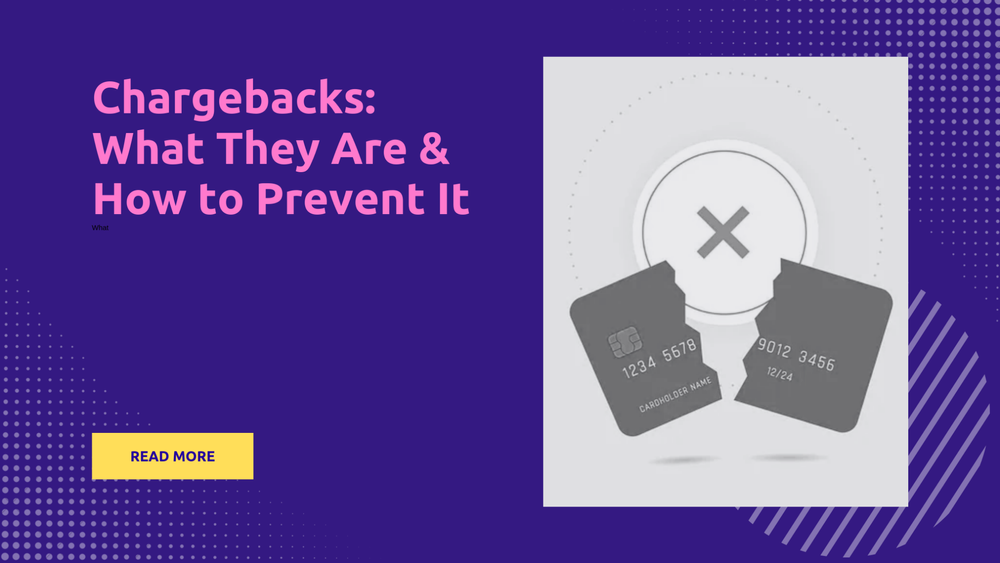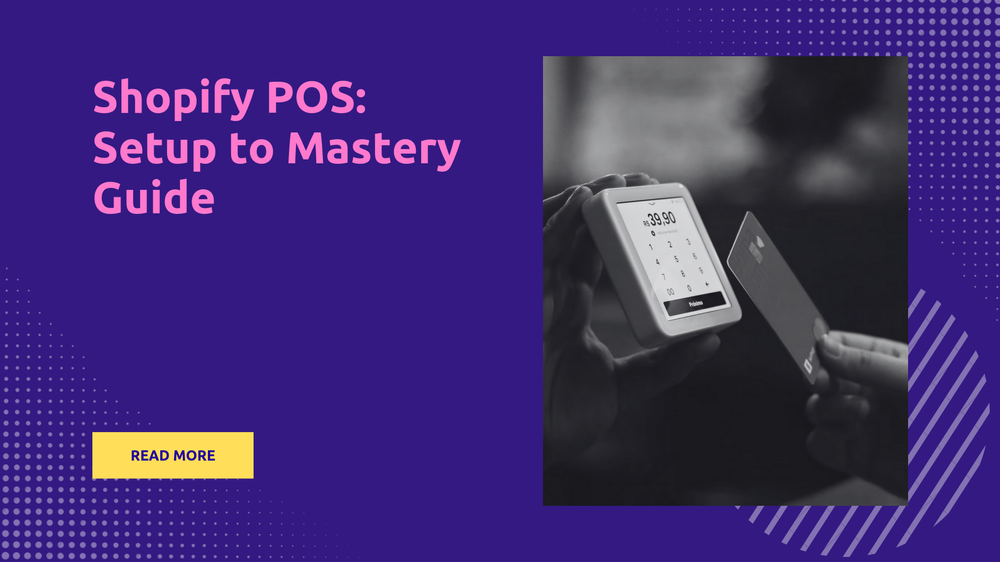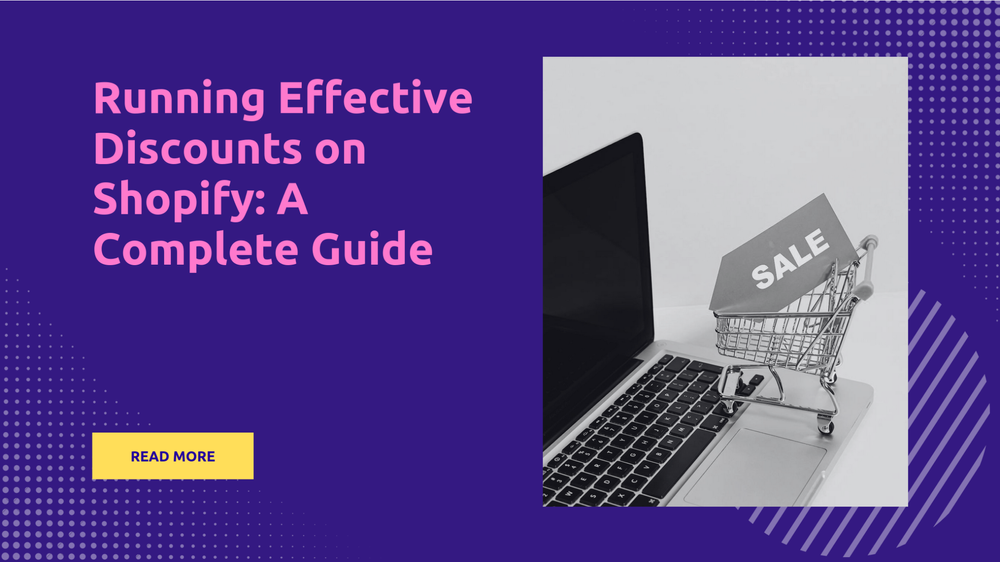Shopify vs BigCommerce vs Wix vs Magento vs Salesforce: Who Wins?
By Abhishek Sebin on

Choosing the right e-commerce platform is a critical step for any business looking to sell online. With so many options available, it can be difficult to know where to start. This article aims to demystify the process by comparing six popular platforms: Shopify, BigCommerce, Wix, WooCommerce, Magento, and Salesforce Commerce Cloud. We'll explore their strengths, weaknesses, and ideal use cases, helping you to make an informed decision about which platform best suits your needs. Let's get straight into it!
Overview of Each Platform
This section gives you a quick look at each e-commerce platform we're talking about. We'll cover their strengths, who they're best for, and their main features.
Shopify
Shopify is known for being easy to use and grows with you, so it’s a good fit for small to medium businesses. It comes with tools to build a website, list products, handle payments, manage shipping, track inventory, run marketing, and look at analytics. Shopify also has a wide range of customizable themes and a large app store to choose from.
It's good for businesses that are just starting out. However, there are some limitations: you only get 3 product options and 100 variants, the number of locations and staff users are limited depending on your plan, and there can be some SEO limitations because of the limited URL structure.
Top brands using Shopify include: Steve Madden, Red Bull, and Penguin Books
BigCommerce
BigCommerce is designed for larger businesses that are growing fast and have more complex needs. It lets you have lots of product options, a clear category and subcategory system, multiple currencies, different shipping choices, and detailed tax options. BigCommerce also has features like abandoned cart emails, detailed analytics, and strong SEO.
They offer 24/7 customer support and have a decent app store. It’s best for businesses that need a fully-featured e-commerce solution with complicated product, shipping, and tax needs. Because it's a SaaS platform, you don't have to worry about tech problems or server costs, and you can get your store up and running quickly. BigCommerce also supports B2B businesses, as well as those with multiple sales channels and storefronts.
Top brands using BigCommerce include: BMW, Crest, and Harvey Nichols.
Wix
Wix is best for beginners and people who like things simple, with its easy drag-and-drop interface. It has an AI website builder, lots of templates, SEO tools, marketing features, blogging tools, and built-in analytics.
Wix is a good choice for small businesses, content-focused websites, personal websites, and businesses that just need a small online store. It has a free plan, plus paid plans that add e-commerce features. However, Wix can slow down with lots of orders, isn't as customizable, and can have some issues with mobile layouts.
Top brands using Wix include: OGI Eyewear, Coal and Canary, and Yantra.
WooCommerce
WooCommerce is a free, open-source plugin for WordPress, so it’s really flexible. You can customize it a lot with free and paid add-ons and themes. Key features include managing inventory, tracking orders, customer accounts, guest checkouts, and handling payments.
WooCommerce also supports various product types like physical and digital goods, subscriptions, and memberships. It’s a good fit for small and medium businesses, startups, and anyone already using WordPress. However, you need to manage it yourself and have some technical knowledge and maintain it. There can also be hidden costs for premium themes and add-ons, and the more add-ons you have the slower it can get. It also lacks legal documentation, data protection, declarations and revocations.
Top brands using WooCommerce include: Click Bank, Blue Star Coffee, and Golden Corral.
Magento
Magento is an open-source platform made for large companies that need to handle complex and high-volume operations. It has a lot of customization options and is built in PHP.
It’s designed for medium to large-scale businesses that need a robust platform for B2B and B2C operations, such as multiple stores, currencies, and languages. Magento also has many extensions and integrations, and a large community to support it. The platform also has good SEO management and discounting capabilities.
Top brands using Magento include: Liverpool Football Club, Ford, and Sigma Beauty.
Salesforce Commerce Cloud
Salesforce Commerce Cloud is an enterprise-level option with complex features for big businesses that have complex needs and lots of resources. It provides solutions for both B2C and B2B companies, focusing on making personalized shopping experiences across different channels and devices.
It scales well thanks to its enterprise-oriented architecture and works well with other Salesforce products. It also has order management capabilities that let you track and handle customer orders.
Salesforce Commerce Cloud is used by the biggest brands in the world, including: New Balance, Forever 21, and Bose.
Ease of Use and Setup
This section looks at how easy each platform is to use and set up. We'll cover the initial setup, the user interface, and how much of a learning curve you can expect.
Shopify
Shopify gets you up and running quickly. It has a simple layout and lots of features. The dashboard is organized, and there's even a search tool if you get stuck. The good thing is that you don't need any coding skills to use its themes, checkout or product pages, which makes it a breeze for new users to get started. It also has a big app store (including must-have apps like Postship), which can help you extend the platform's capabilities.
BigCommerce
Unlike Shopify, BigCommerce requires fewer third-party apps to get your store going. This is because many advanced features like multichannel selling come built-in with the platform. Its mobile app is packed with features, but it takes more time to learn how to use it properly.
Wix
Wix uses an AI website builder to help you get a site up quickly, which is great if you are just starting out. It's easy to get going, but it’s not as flexible or feature-rich as some other platforms. While you can pick from different themes, there aren't as many options as you'd find with Shopify or WooCommerce. Also, it's AI tools for text generation aren't as smooth as you'll find on Shopify, for example.
WooCommerce
WooCommerce is a free, open-source plugin for WordPress. It lets you customize your site in many ways using plugins and themes, and there are virtually unlimited options. It's got a medium learning curve, especially when you're setting it up and installing it for the first time. You’ll also need to handle hosting, security standards, and software updates yourself.
Magento
Magento is another open-source platform, but it's more complex to set up than the others. This means it'll probably take you longer to learn because of how intricate it is.
Salesforce Commerce Cloud
Salesforce Commerce Cloud is a cloud-based platform that can connect to other systems to create custom buying experiences. It’s known to be more complex than other platforms, and because it's built for large enterprises with complex needs, it has a pretty substantial learning curve.
Final Verdict
If you want something dead-simple, Wix is hard to beat but you'll quickly run into issues if your store grows. Shopify is slightly more difficult to set up but much more scalable in the long-term. You may also want to consider BigCommerce if you'll be selling on multiple platforms like Amazon and Etsy.
If you already run a WordPress site, WooCommerce may be the way to go because it comes in the form of a plugin and easily downloads onto your WP installation. Generally speaking, Magento and Salesforce should be your last option since they focus on larger enterprises and have complex features that you probably don't need.
Features and Functionality
Let’s dive into what each of these e-commerce platforms can actually do. This section will give you a clear idea of their core features.
Payment Gateways
Shopify integrates with a ton of payment gateways – over one hundred, actually. They’ve got everything from the usual suspects to more modern options. BigCommerce doesn’t quite have as many, with less than 70, but they do let you use third-party payment processors. Plus, they also offer Authorize.net, Square, and PayPal (via Braintree) right out of the box. Wix also offers 80+ payment gateways.
WooCommerce has a more limited set of payment gateways. That being said, it uses Stripe by default which should be good enough for most stores.
SEO Features
Shopify includes built-in SEO tools that let you tweak things like meta descriptions, title tags, and URLs. This should be enough to get your store started, but if you need more powerful tools, check out our list of the top 10 SEO apps for Shopify.
BigCommerce gives you even more control: you can adjust URLs, title tags, header tags, and metadata, and they automatically create 301 redirects, so you don't have to worry about broken links. WooCommerce has its own SEO features that connect well with the broader WordPress ecosystem. Wix also offers SEO tools, but they're not quite as slick as what you'd get with the previous three. Magento supports only a relatively basic set of SEO features so you'll likely have to supplement it with third party tools.
App Stores
Shopify boasts a huge app store with over 9,000 apps (including must-haves like InstaVid) and thousands of themes, meaning you can extend the platform's abilities easily. WooCommerce gives you a massive variety of plugins and themes, allowing tons of customization. BigCommerce also has a decent number of app options to choose from. Magento, and Salesforce Commerce Cloud have comparatively smaller app stores because of their "works out-of-the-box" nature.
Mobile Apps for Merchants
Both Shopify and BigCommerce offer mobile apps for merchants. Shopify's app is known for being user-friendly and easy to learn, while BigCommerce’s is feature-rich and scales well, but it takes some more time to get the hang of.
Marketing Tools
Shopify: They’ve got a built-in email app that allows you to create, schedule, and track your campaigns. It connects seamlessly with social media, including Instagram, Facebook, TikTok, and Pinterest. There’s even a way to display your Instagram posts on your online store. Plus, Shopify also gives you tools for building your brand, such as a logo maker, video creator, a business name generator, and even a gift card template.
BigCommerce: They integrate with email platforms such as MailChimp and G-Suite. They also have built-in SEO features. And you can sell on social media using Facebook and Google.
WooCommerce: They support email newsletters through plugins and provide a few SEO features as well.
Wix: Has a built-in AI tool that helps you generate text for product descriptions, titles, and blog posts.
Magento: Has basic support for email campaigns, loyalty programs, etc. You'll likely have to supplement it with third party tools.
Salesforce Commerce Cloud: Connects well with Salesforce's other marketing tools, such as Salesforce Marketing Cloud.
Multi-Channel Selling
Shopify: You can sell through social media (TikTok, Instagram, Facebook, Pinterest), marketplaces (like Amazon, eBay, Walmart, and Etsy), and even in-person using their POS system. It also supports sales via email and through online search. Shopify also has its own Shop marketplace that is exclusive to Shopify merchants.
BigCommerce: Supports sales through marketplaces (eBay, Amazon, Walmart) and social media platforms like Facebook and Google.
WooCommerce: Has connectors to many popular marketplaces.
All the platforms on this list support multi-channel selling to varying degrees, but Shopify is the best-suited to this task because of the huge number of integrations available on the app store.
Limitations
Shopify: Their URL structure can make SEO a bit tricky. Also, you have limited control during high-traffic times or with very complex inventory systems. They don't have the most flexible multi-currency support. Plus, you’re limited on product variations, and you’ll need a premium plan or add-on to calculate real-time shipping rates. Shopify also lacks a unified order tracking experience (which Postship can help with).
BigCommerce: Can be slower than Shopify. It has a steeper learning curve, and they don’t offer quite as many payment gateway integrations.
Wix: Their AI tools aren't as strong as what you get with Shopify. Plus, it has limited customization and fewer app integrations.
WooCommerce: You're responsible for security, hosting, PCI compliance, and software updates, and their checkout isn't quite as streamlined as Shopify.
Magento: Businesses sometimes consider moving off this platform, because of its complicated nature.
Salesforce: You’ll need third-party programs for branding, and it doesn’t have a great POS system compared to Shopify.
Customization and Design
Let's dig into how much control each of these platforms give you when it comes to designing your online store.
Design Control Overview
Shopify lets you customize your site with themes and a theme editor, but it's not totally open, so your tweaks are limited. BigCommerce gives you more built-in features and more control over URLs and metadata. But, it's a bit harder to learn.
Wix uses a drag-and-drop builder that doesn’t require code, but you can't customize it as much. WooCommerce, an open-source plugin for WordPress, is super customizable, but you'll need some tech skills. Magento, also open-source, has tons of customization options, but is complex.
Theme and Template Options
Shopify has over 70 official, easy-to-use themes and professionally made templates. If you're skilled, you can make your own themes too. WooCommerce has endless choices, with free and paid themes that you can customize a lot.
BigCommerce also has free and paid themes. Wix offers some templates, but not as many, and they're not that customizable. Magento lets you customize your site a lot with its themes. Salesforce Commerce Cloud allows you to tailor your storefront to match your brand.
Shopify Design Limitations
Shopify does have some design limits. Its URL structure isn't great for SEO because you can't change the /collections/ or /products/ paths, making keyword use trickier. Your blog has to follow a specific category layout.
You also can't customize the checkout or translations much. Plus, you're limited to just three options per product. For anything complex, like integrations or theme changes, you'll probably need a developer.
BigCommerce Design Limitations
While BigCommerce gives you more control than Shopify, it needs third-party apps to get a fully branded look.
Wix Design Limitations
Wix is much easier to use that the other platforms on this list, but it doesn't have as much customization or as many features.
WooCommerce Design Limitations
WooCommerce is an open-source system that you can change completely to fit your vision, with all the responsibility that comes with it. In terms of customizability WooCommerce is the clear winner.
Salesforce Commerce Cloud Design Limitations
Salesforce Commerce Cloud offers more tools for developers who need to build very tailored solutions for enterprise-level businesses, compared to Shopify.
Pricing and Plans
Here's a breakdown of what you can expect to pay for each platform.
Shopify
Shopify offers a few different plans depending on your needs. You've got Basic at $24 a month (when paid yearly), the standard Shopify plan for $69, the Advanced plan at $299, and then Shopify Plus which starts at $2,300 a month (and can vary according to your business' needs). The Basic plan gives you abandoned cart recovery. If you choose the Advanced plan, you get 15 staff accounts. There's also a $5/mo Starter plan if you want the bare minimum to get started.
For all plans, if you pay for a full year, you get a 25% discount on the monthly price. All plans other than Starter offer free transactions when you use Shopify Payments, but keep an eye out for other fees, like extra transaction fees and credit card processing fees. The Starter plan has a 5% fee on every order. The Basic plan and above also gives you a shipping discount of up to 77%.
BigCommerce
BigCommerce Essentials also has different pricing options. Standard is $29 a month, Plus is $79 a month, Pro is $299 a month, and then they have Enterprise with custom pricing. The Standard plan includes features for B2B companies, like customer groups and tools to help sync with QuickBooks. The Plus plan comes with abandoned cart recovery.
The Pro plan is for businesses with less than $400,000 in sales. And with the Enterprise plan, you have unlimited API calls, custom pricing and you can negotiate your sales limit. They don't charge transaction fees and you get unlimited file storage, product options, bandwidth, and staff accounts. They offer a 15-day free trial for new users, and if you sign up before the trial ends, you get three months free. There's also a 10% discount if you pay for the year upfront. Hidden fees include credit card processing fees, which range from 2.2% to 2.9% plus 30 cents per transaction.
Wix
Wix has: Wix Core at £16 a month, Wix Business at £25 a month and Wix Business Elite at £119 a month. Note that the £9 Light plan does not have e-commerce features, so you need Wix Core minimum if you want to start an online store.
WooCommerce
WooCommerce is a free plugin for WordPress, but you do have to pay for things like hosting, themes, and add-ons. Transaction fees depend on what payment processor you use (like PayPal or Stripe) and will usually be a percentage of the transaction plus a set fee. You'll also have to pay for a domain name. If you run a WordPress site then you're already paying for these things, and adding WooCommerce to your stack comes at no extra cost.
Magento
Magento has two versions: an open-source and a proprietary option. The open-source option is free to use but lacks many important features such as B2B, wholesale, out of the box RMA processing etc. The paid version (known as Adobe Commerce Cloud) does not publicly disclose their pricing. You'll need to contact Adobe sales for specific information.
Salesforce
Salesforce's pricing changes a lot and depends on your company size, how much customization you need, and what features you choose. Expect to pay more at the start, plus ongoing maintenance costs. However, these prices usually include ongoing support, maintenance, and updates. We don't have specific plans or fees mentioned here, so you'll need to contact Salesforce sales for specific information.
Pricing Takeway
If you're just starting out and watching every penny, Shopify's Starter plan at $5/month or WooCommerce (if you're already on WordPress) are the cheapest ways to get going. Keep in mind that both come with some transaction fees and extra costs. Shopify Basic is a good step up if you can manage $24 a month (paid annually) and want more features.
If you've got a bit more wiggle room, BigCommerce Standard or Shopify's main $69 plan are solid choices, giving you more tools and fewer transaction fees. They’re ideal for growing businesses. Wix is worth considering if you’re just looking for a simple store builder and can swing the £16 a month for Wix Core. Avoid Magento and Salesforce if you're on a tight budget. For larger operations or those with specific B2B needs, BigCommerce Pro or Shopify Advanced are worth a look, but be ready for those $299 monthly fees.
Customer Support
Let's talk about how each platform handles customer support, since this can be a big deal when making your choice.
Shopify
Shopify offers 24/7 support, which is a real plus. You can reach them via live chat, phone, or email. They've also got a really detailed help center, like a big instruction manual for Shopify, an active community forum where you can ask questions, and the option to hire a Shopify expert for more technical stuff.
BigCommerce
And what about BigCommerce? They offer support through phone, chat, and email, along with all the documentation you could need. All their plans come with 24/7 support.
Wix
Wix has customer support available through their FAQs, chat (24/7 in English and other languages), email, and you can even request a phone callback, though it’s only during business hours. They do have an active community forum, too, which could be helpful.
WooCommerce
WooCommerce mostly relies on community support (through forums and blogs), so the level of support you'll get will be a mixed bag, and depend on who developed your plugins and themes. Usually, you'd get help from the community, or the companies that developed your theme or plugins. The core WooCommerce plugin gives you the same level of support whether it's free or paid, but your theme and plugin support levels will vary.
Magento and Salesforce
Platforms that are built for enterprise-level businesses such as Magento and Salesforce typically provide dedicated account managers. You’ll also find Service Level Agreements (SLAs) with guaranteed response times. They also offer premium support for faster help when you need it.
Conclusion
As we've seen, each option has its own unique strengths and weaknesses. Shopify stands out as a user-friendly and scalable option, particularly well-suited for small to medium-sized businesses that value ease of use and a robust app ecosystem. BigCommerce offers a more feature-rich solution for larger, growing businesses with complex needs, providing advanced tools for product management, shipping, and taxes. On the other hand, Wix is ideal for those prioritizing simplicity, with its drag-and-drop interface and AI-powered website builder. WooCommerce provides extreme flexibility and customization, but requires a certain level of technical expertise to manage effectively. Magento is a powerful platform for large enterprises, and Salesforce Commerce Cloud offers a more complex solution for businesses that have a big budget and very specific needs.
Ultimately, the "best" platform depends entirely on your specific business requirements, technical expertise, and budget. If you're a startup or small business looking for a quick and easy setup with a wide array of features, Shopify might be your best bet. If you anticipate rapid growth and need robust tools for complex operations, BigCommerce could be the right choice. If simplicity and a code-free experience are your priority, then Wix is for you. If you already use WordPress and want a highly customizable platform, then look at WooCommerce. For large-scale enterprises that need extreme flexibility and high-volume traffic capabilities, Magento or Salesforce Commerce Cloud could be a better match.
Regardless of the platform you choose, remember that enhancing the post-purchase experience is key to customer satisfaction and loyalty. Solutions like Postship, with its order tracking, branded tracking pages, and customizable notifications, can greatly improve customer engagement and reduce WISMO tickets. By investing in a platform that aligns with your needs and complementing it with tools that enhance the customer journey, you can set your e-commerce business up for success.




